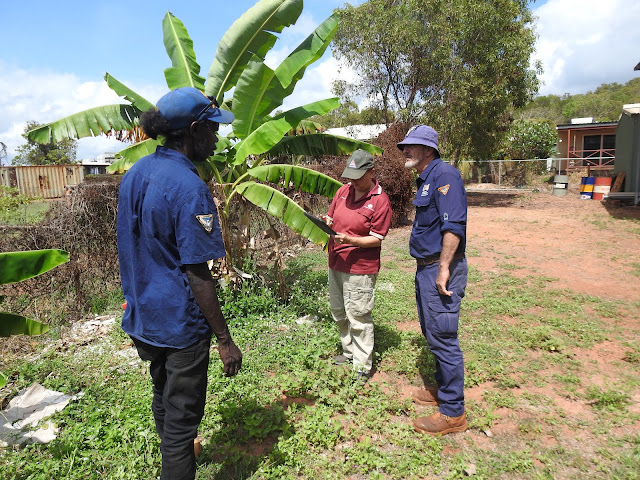MIMOSA, BANANA FRECKLE, CITRUS CANKER and BOGGED on the FLOODPLAIN
Hello again
We recently had a biosecurity person from the Commonwealth Department of Agriculture, Water and the Environment at Croker Island for the best part of a week. We conducted three surveys - The photo below shows us checking bananas for the disease called Banana Freckle - it is serious threat to the banana industry. We were also looking for Citrus Canker amongst other diseases - thankfully nothing nasty was found.
We also did an aquatic biosecurity survey at low tide looking for aquatic creatures that we don't want in Australia - like the Asian Green Mussel. They can easily hitch a ride on vessels, marine litter or ghost nets.
Mimosa pigra is a prickly shrub from Latin America rated one of the nation’s worst weeds. There are suspicions it was brought into Australia in the 19thcentury as a curiosity because of its mildly sensitive leaves. If so, that was a very big mistake, because it spread from the Darwin botanic gardens to the Adelaide River floodplains and has now infested 80,000 hectares in northern Australia.
Again in the Daly River area - an area that has been recently treated. At Croker Island we are not to this stage - and hopefully will never be.
There have been estimates of around 3,000 horses on Croker Island - left over from the cattle operation during the mission days.
Recently Clayton got the buggy completely bogged in a part of the floodplain that is very wet - under the dry crust. The Can Am buggy will float over most surfaces but not this time. It was sitting firmly on its 'belly'.
We just had a surprise visit from one of Bryan's flying instructors from 1989, who now works with the RFDS - but that is a story for the next blog.
Take care
Nancy and Bryan (and PK)














Comments